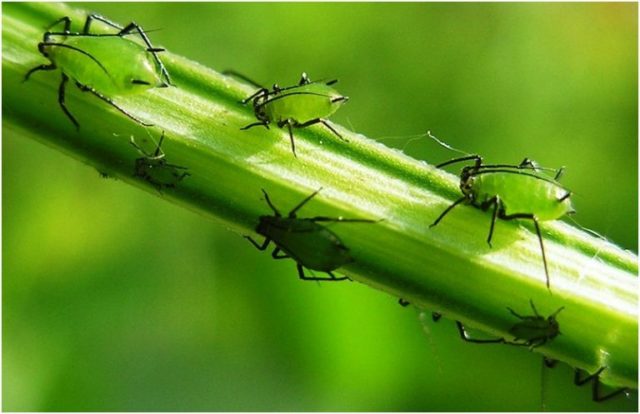Content
Asparagus is one of the most delicious, healthy and expensive vegetable crops. At the same time, every gardener can grow such a valuable curiosity in his garden plot. There are very few varieties that are zoned for Russia; asparagus Arzhentelskaya is rightfully considered the most widespread.
Description of Asparagus Argentelles
Asparagus Arzhentelskaya was included in the State Register of the Russian Federation in 1949. The originator was the Russian Seeds company. For 70 years it has been grown in Russia and neighboring countries.
An adult plant reaches a height of 2 m. The variety is characterized by cold resistance: thanks to its powerful root system, Argentelska asparagus is able to withstand frosts down to -30 ° C. The variety is early ripening, has high taste, and is undemanding to care. Young shoots are thin, snow-white, up to 1 cm in diameter, with cream-colored flesh with a slightly noticeable tint of yellow. Asparagus Argental has both male and female flowers. The seeds of the crop ripen in August.
The disadvantages of the Arzhentelskaya variety include: low yield and short shelf life. In addition, if harvesting is delayed, asparagus shoots quickly become coarser and acquire a green color with a purple tint.
Growing white asparagus Argentelles from seeds
One of the ways to obtain new young plants of Argentelian asparagus is propagation using seeds.
Due to the very low germination of seed, it is preferable to grow asparagus through seedlings rather than directly sowing seeds into the ground.
To “wake up” the seeds and soften the dense shell, they are soaked in melt water heated to 35 ° C for 2 - 3 days. To improve the effect, use an aquarium compressor. Air bubbles help Argentelian asparagus seeds “wake up”.
The planting material prepared in this way must be wrapped in a damp cloth moistened with a root formation stimulator (for example, Emistim-M) and placed in a plastic bag, having previously made several small holes in it. The package is stored in a warm place. Argentelian asparagus seeds are periodically ventilated and moistened. Instead of industrial stimulants, it is permissible to use folk remedies, such as aloe juice or succinic acid.
The first roots will appear no earlier than in 6 - 7 weeks. Therefore, the seeds are soaked in February, since at least 3 - 3.5 months pass from the start of preparing the seed to planting in the ground.
The best containers for growing Asparagus Argentelles are plastic cassettes or cups. Before using them for disinfection, they must be treated with any chemical solution or held over steam.
The composition of the soil for growing Argentelian asparagus seedlings includes turf soil, sand, compost and peat, in approximately equal quantities. To avoid the appearance of fungal diseases, the soil is doused with boiling water with the addition of potassium permanganate, and to prevent them add wood ash, chalk or activated carbon in the amount of 10 g per 2 liters of soil. After complete cooling, cups and cassettes are filled with the soil mixture. To drain excess water, holes are made in the bottom of the containers with a hot nail.
Argentelska asparagus seeds are planted to a depth of 1 - 1.5 cm. After this, the containers are covered with glass or film and kept at a temperature of 25 ° C until germination. To prevent condensation, the crops are ventilated daily and the glass is turned over.
When seedlings emerge, Argentel asparagus seedlings should be moved closer to the light. However, they do not place it on the windowsill, since bright light is not necessary for seedlings, and cold glass and the coolness coming from them can harm fragile plants.
When the seedlings of the Arzhentelskaya variety grow a little and reach 8 - 9 cm, they may droop, as they are not able to withstand their own weight. To avoid this, it is recommended to install small supports. However, this must be done very carefully so as not to damage the fragile roots of the plants. As an option, a net is pulled over the top, which will prevent young seedlings from falling.
At this time, it is recommended to fertilize Argentelska asparagus with any of the complex fertilizers for vegetable crops. This will allow the “fluffy Christmas trees” to get stronger and stimulate their growth.
As Argentelian asparagus seedlings mature, care comes down to keeping the soil moist and lightly loosening it.Like all plants, asparagus reaches towards sunlight. Therefore, every 4 - 6 days the container with plants is turned 90°. To avoid confusion, it is recommended to do this clockwise.
If the seeds of Argentelian asparagus were initially planted in a common box, then when they reach a height of 15 cm, they are planted in individual cups. It is important to carry out this procedure as carefully as possible, without damaging the roots: otherwise very fragile plants may not take root.
After 3.5 months, Argentelian asparagus seedlings are ready for planting in the ground. By the beginning of June it reaches 30 cm in height and begins to branch.
To avoid the death of young plants from winds and direct sunlight, they are hardened off before planting in open ground.
Growing asparagus, including the Arzhentelskaya variety, from seeds is presented in detail in the video:
Planting and caring for Argentelian asparagus in open ground
The bed where Argentelian asparagus will grow is chosen in a sunny area. To protect plants from gusts of wind from the prevailing wind zone, at a distance of 2 m from the plantings it is necessary to create a curtain of corn or hedges: in this way, fragile seedlings will be protected from drafts and, at the same time, not shaded.
Preparation of planting material and site
Nutritious, but fairly dense soil is not suitable for growing Argentelska asparagus. In muddy or clayey soil, you cannot get a harvest of succulent shoots. The plant needs nutritious soil with good aeration.
In the fall, at the site of the future beds, it is necessary to dig a trench 35 - 40 cm deep. Crushed branches of cut trees are placed at the bottom, which serve as drainage, and in the process of further decomposition - additional nutrition. Soil consisting of peat, compost, humus, turf soil and sand is poured on top in ratios of 2:2:2:1, respectively.
In spring, the soil is loosened, complex fertilizer is applied and a ridge 12-15 cm high is formed.
Landing rules
To make it easier to remove from the container, Argentelian asparagus seedlings are watered several hours before planting.
Carefully remove the plant from the container and shorten its roots by 3-4 cm, cutting off the “fringe” on the earthen coma. The prepared holes are watered with warm, settled water and the seedlings are carefully planted in a permanent place.
Since Argentelian asparagus grows slowly in the first years and takes up a lot of space for planting, to save space it is compacted with onions, radishes, vegetable beans and other crops that are planted between the rows.
Watering and fertilizing
Despite the seeming capriciousness of the exotic crop and the fear of gardeners that it will require a special approach, the plant is absolutely unpretentious. Caring for Argentelian asparagus is not at all difficult.
From the first days of planting asparagus seedlings and for 2 weeks, watering is carried out daily.Then - every 3 - 5 days, depending on the weather. The water norm is 0.6 - 0.8 liters of water per bush. The soil for the Arzhentelskaya variety must always be kept moist. However, waterlogging of the soil should be avoided, as this has a detrimental effect on the plant.
Argentelska asparagus seedlings should be watered only for the first 2 - 3 seasons. During this time, they form a powerful root system that penetrates deep into the soil, after which the asparagus can independently provide itself with moisture.
Watering will be required only during intense and prolonged heat and when the shoots ripen.
For Argentelskaya asparagus, drip irrigation is considered the best. Not only does it not form a crust on the surface of the soil, but it also penetrates better into the roots, which are very deep in an adult plant.
In the spring, when Argentelian asparagus awakens and begins to gain mass, it especially needs nitrogen. Mineral fertilizers (ammonium nitrate, urea) are applied in the form of a solution in a ratio of 20 g per 10 liters of water. Organic fertilizers are diluted with water in a ratio of 1:15 and 1:20, respectively. Feeding is carried out 2 - 3 times with breaks of 2 - 3 weeks.
In mid-summer, complex fertilizer is used to feed Arzhentelskaya. In autumn - phosphorus and potassium. The last fertilizing for the season is applied in dry form, distributing it evenly over the bed and lightly incorporating it into the soil, after which the plant is watered. Wood ash can be used as an alternative to mineral fertilizers.
As you can see in the photo, Argentelian asparagus is a powerful plant, so it needs feeding throughout the entire growing period.
Hilling
To obtain tender, bleached shoots of Argentelian asparagus, the plant should be hilled as it grows. In addition, hilling will slow down the transformation of young shoots into a hard stem that cannot be used for food.
Trimming
Asparagus does not require special care. When forming a bush, the plant is pruned in the following cases:
- use of tender shoots for food purposes;
- removing diseased and damaged branches;
- before wintering.
Asparagus looks very beautiful as an addition to bouquets. However, heavy pruning can weaken the bush, so this should be done with caution.
Preparing for winter
Asparagus Argentel has good frost resistance. The variety grows even in the Urals and Siberia. However, in order to protect the roots from freezing, the crop must be covered for the winter.
First, you should remove all diseased and yellowed branches. Then hill up the plant, forming mounds 25 - 30 cm high. Cover the top with spruce branches or covering material, such as agrofibre or burlap.
In the spring, at a stable above-zero temperature, the covering material is removed from the plants.
Harvesting
The first harvest of Argentelian asparagus is harvested only in the third year of the plant’s life. By this period, the bush had formed 10 - 12 shoots. However, only 1 - 3 can be used for food purposes. Young stems are broken off or cut at a height of 3 cm from the soil level. After this, the asparagus is hilled.
In adult plants, shoots are cut off within 30 - 45 days. After this, the plant is allowed to prepare for winter.
Store the shoots in a damp cloth or tight bag in the refrigerator.A variety of dishes are prepared from Argentel asparagus. It is wonderful boiled and baked.
Diseases and pests
Argentelian asparagus does not have many pests. First of all, these are aphids that suck the juice from the plant. As a preventive measure, plants with a pungent odor, such as rosemary, basil, and sage, are planted between rows. You can also spray asparagus bushes with infusions of these herbs once every 10 days. If the plantings have already been attacked by pests, you should use chemicals that are divided into 3 groups:
- Contact action – destroying pests by penetrating them through the chitinous cover;
- Intestinal action - entering the esophagus, and then being absorbed into the blood and affecting the pest.
- Systemic action – when the plant absorbs the drug and retains it in its tissues for 15 - 30 days. By feeding on the sap of such plants, the aphids die.
Traditional medicines also include infusions of garlic and wormwood.
Specific pests of Argentelian asparagus include the asparagus leaf beetle and the asparagus fly. The fight against them consists of dusting plants with ash, hanging adhesive tape and spraying with Ikta-Vir, Mospilan, Aktaru.
Fungal diseases rarely affect asparagus plants. The exceptions are rust and root rot. Rust is fought with the help of copper-containing preparations. To prevent root rot, Entobacterin or Glyocladilin are added to the soil.
Reproduction
In addition to propagating Argentelian asparagus by seeds, you can use the following methods:
- dividing the bush;
- cuttings.
In the first case, you need to divide the bush with at least one shoot, after which it needs to be planted in a permanent place. The advantage of this method is that it can be used at any time from spring to autumn.
In the second method, petioles are cut from last year's shoots of Argentelska asparagus and rooted in sand. Each future bush is covered with a plastic bottle. This procedure is carried out from the end of March to the beginning of June.
Conclusion
Asparagus Argentelles is an unpretentious crop and a healthy vegetable. Despite the fact that in the first years it requires increased attention, subsequent cultivation of the crop pays off with minimal care. The variety will not only allow you to enjoy exotic shoots, but will also decorate your summer cottage with lush greenery.
Reviews of asparagus Argentels

















